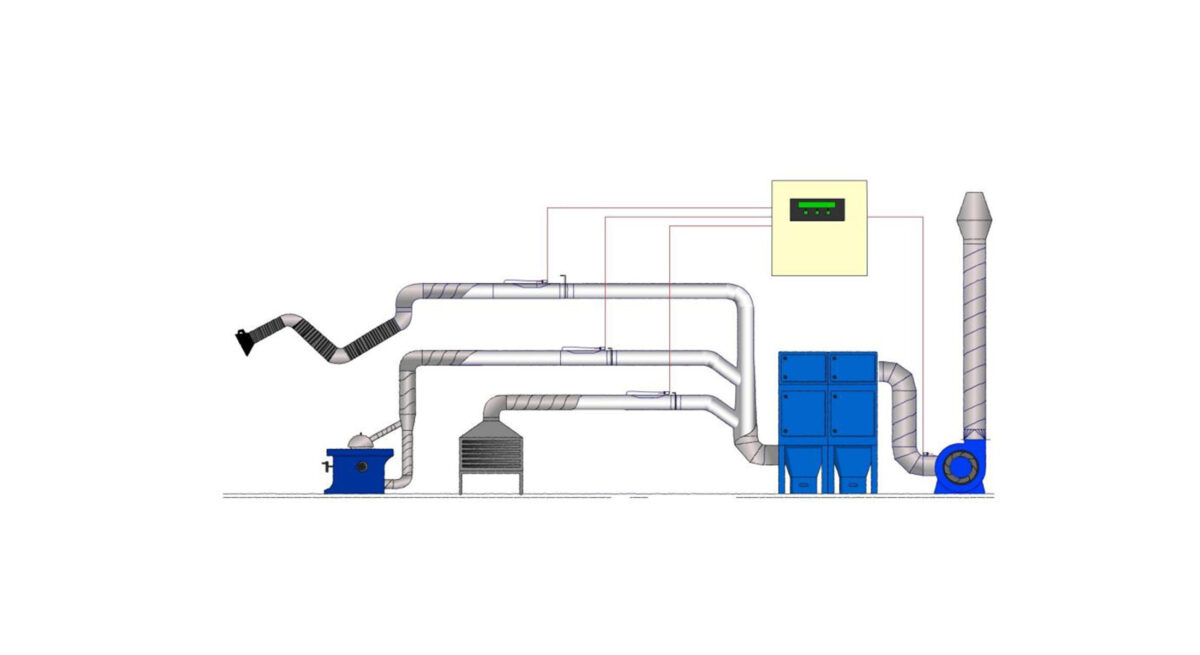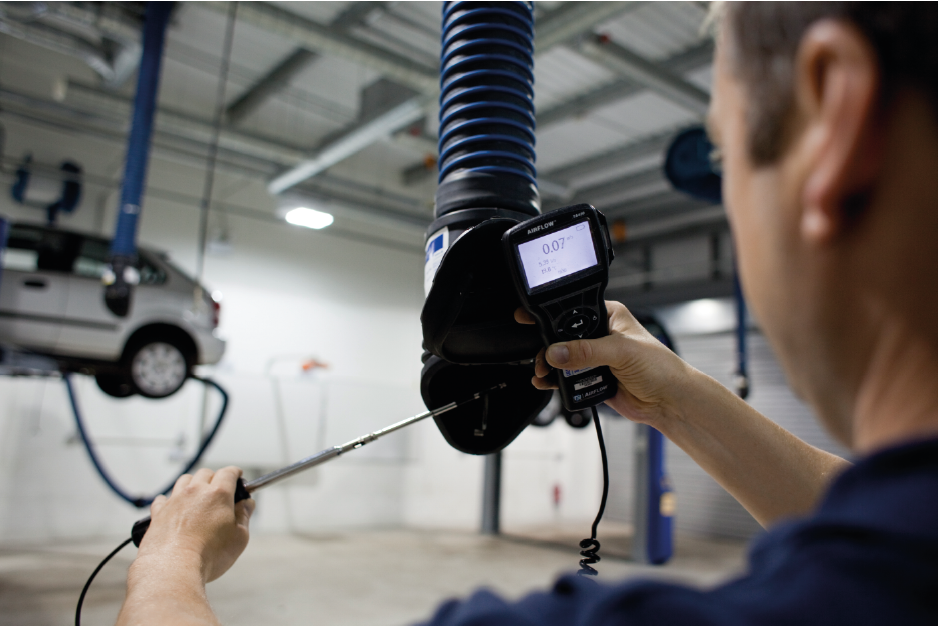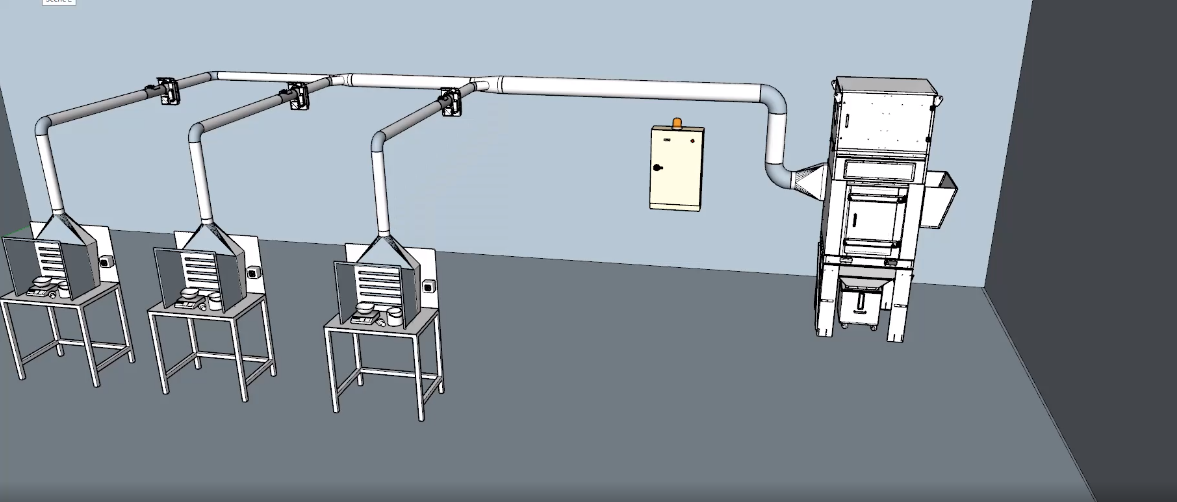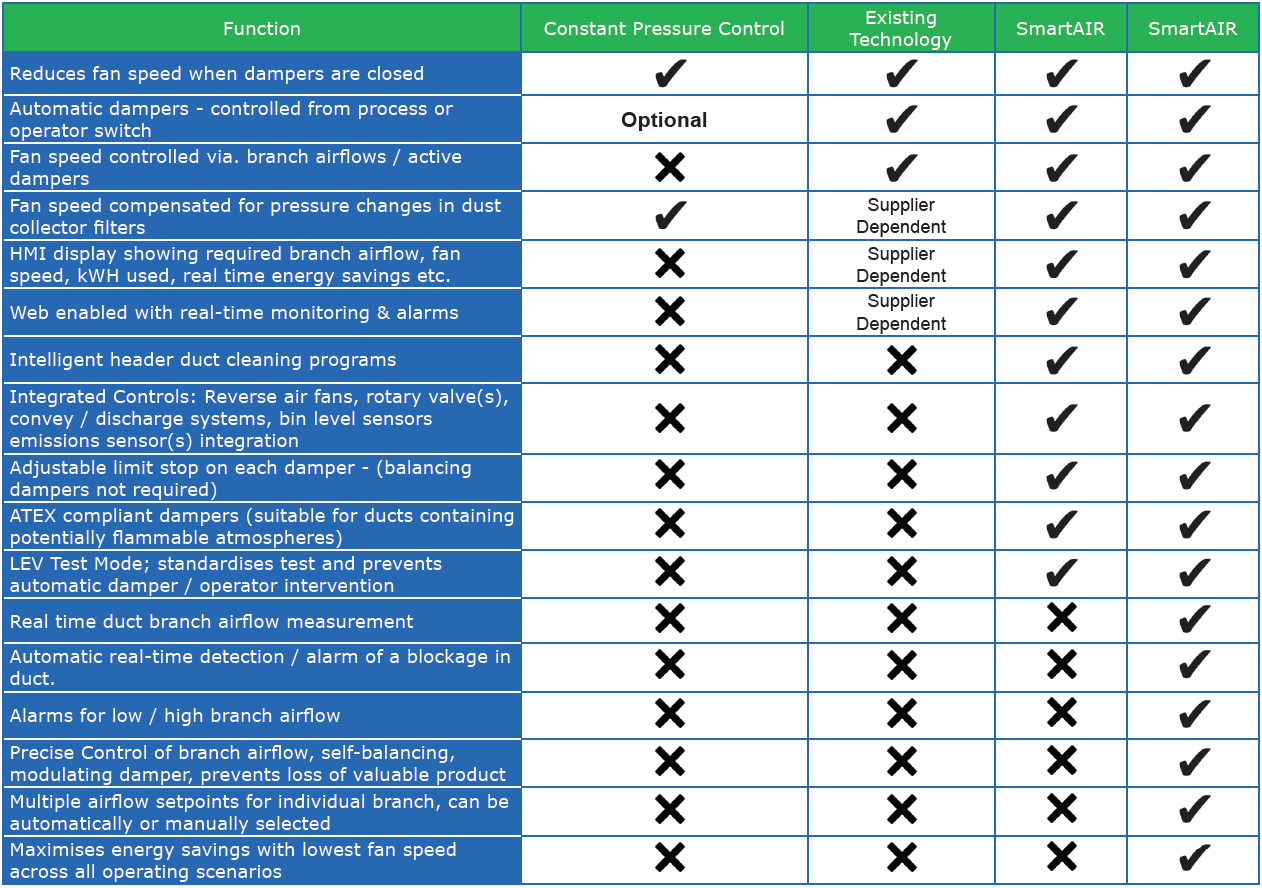SmartAIR® Ventilation Control – Feature Comparison
In many multi branch industrial ventilation systems, not all branches are used simultaneously and filter resistance increases over time, so it is highly desirable to adjust the fan speed accordingly. Existing inverter-controlled systems can help to solve this problem and provide energy savings, but cannot control and balance multiple branch air flows and fully optimise fan speed. SmartAIR® is the only industrial ventilation control system that can do this. SmartAIR®-Lite is a lower cost industrial ventilation system, comparable with existing technology, with some distinct advantages.
Traditional Inverter with Constant Pressure Control (ICPC) Systems
This is the most basic form of inverter control of a ventilation system to provide some optimisation of airflow and energy
savings. How it works:
- A pressure sensor is installed into the main header duct, from which the inverter will control airflow against an internal ‘system pressure’ set point.
- As manual or automatic dampers are opened/closed for LEV branches or extract ducts, the inverter will sense the change in the ‘system’ pressure and increase or decrease fan speed to maintain the pressure setpoint i.e closing a branch will increase the system static (vacuum) pressure and the inverter will reduce fan speed. Opening a branch decreases system static pressure and inverter increases the fan speed.
Problems with ICPC
- If a blockage starts to occur in a duct the fan will ramp down not up, causing the blockage to become worse and other branches airflows will reduce; potentially causing a loss of hazardous substance control. There will no alarm other than manual branch airflow indicators, if fitted.
- No control/measurement of header duct transport velocity, therefore product settlement can occur. The only way to prevent this is to have a branch permanently open or install a pressure relief/bleed-in damper (at end of header duct). This considerably reduces or eliminates. potential energy savings depending on design.
- With manual dampers you rely on operators closing or opening branches to provide any energy savings
- If filters have been installed on individual LEV hoods/branches have variable pressure, ie a flex arm or filter in LEV booth, the fan will reduce speed, rather than increase speed as the pressure increases. This will reduce the airflow in all the ‘active’ branches as well as substantially reducing in the higher-pressure branches.
- The fan control is very imprecise; the system pressure setpoint has to relate to the branch with the highest resistance to flow, whether that branch is ON or OFF.
Disadvantages with existing technologies/SmartAIR®lite:
- No precise control of individual branch airflows; branch airflow indicators are required.
- Balancing or SmartAIR® lite dampers remain in fixed position.
- When different branches are turned OFF the airflows on the remaining branches will likely increase and potentially extract valuable product from the process.
- Reduced energy savings
- Fan speed is not fully optimised during duct cleaning program.
- No opportunity to select different airflows for same branch ie normal and boost/trickle modes etc.
- System balancing must be carried out during system commissioning.
Additional disadvantages with existing technologies
- In addition to automatic shut-off dampers, airflow balancing dampers must be installed to correctly balance the system.
- In competitive systems the duct cleaning programs are basic, just opening all or selected non-used dampers when required, this can reduce airflows in branches in operation and fan speed in not optimised.
- Dampers are not ATEX so should not be used in ducts containing potentially flammable or explosive dusts, fumes, vapours, mists or gases.
- May be difficult to LEV test as dampers can automatically open during testing, affecting system flows and pressures.
Modern and efficient technology in a convenient package
The full Patented SmartAIR® system has modulating branch dampers, self-balances with precise air-flow control and
requires no system balancing or Air-flow indicators (providing operators can see alarm / display).
Additional capacity is available through the airflow optimisation and lower filter pressures.
An intelligent duct cleaning program ensures the main header duct transport velocity can be precisely controlled with opening unused branch &/or bleed-in air dampers.


Get in touch with us
Contact us using the links below to speak to one of our consultants. You can ask us a question, look up useful resources or call us on 0800 032 0895 for an instant response.

